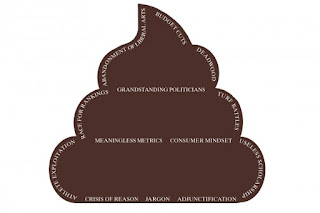A central concept of quantum-many body theory is that of coherent quasi-particles. Their key property is a well-defined relationship between energy and momentum (dispersion relation). Prior to the rise of
ARPES (Angle-Resolved Photo-Emission Spectroscopy) over the past three decades, the existence of electronic quasi-particles was only inferred indirectly.
A very nice paper just appeared which shows a new way of measuring quasi-particle excitations in a
strongly correlated electron system. Furthermore, the experimental results are compared quantitatively to state-of-the-art theory, showing several subtle many-body effects.
Coherent band excitations in CePd3: A comparison of neutron scattering and ab initio theory
Eugene A. Goremychkin, Hyowon Park, Raymond Osborn, Stephan Rosenkranz, John-Paul Castellan, Victor R. Fanelli, Andrew D. Christianson, Matthew B. Stone, Eric D. Bauer, Kenneth J. McClellan, Darrin D. Byler, Jon M. Lawrence
The mixed valence compound studied is of particular interest because with increasing temperature it exhibits a crossover from a Fermi liquid with coherent quasi-particle excitations to incoherent excitations, an example of a bad metal.
The figure below shows a colour intensity plot of the dynamical magnetic susceptibility
at a fixed energy omega, and a function of the wavevector Q. The top three panels are from the calculations of DFT+DMFT (Density Functional Theory + Dynamical Mean-Field Theory).
The bottom three panels are the corresponding results from inelastic neutron scattering.
A and B [D and E] are both at omega=35 meV and in two different momentum planes. C [F] is at omega=55 meV.
The crucial signal of coherence (i.e. dispersive quasi-particles) is that the shift of the
maxima between the G and R points at 35 meV to the M and X points at 55 meV.
It should be stressed that these dispersing excitations are not due to single (charged) quasi-particles, but rather spin excitations which are particle-hole excitations.
The figure below shows how the dispersion [coherence] disappears as the temperature is increased from 6 K (top) to 300 K (bottom). The solid lines are theoretical curves.
The figure below shows that the irreducible vertex corrections associated with the particle-hole are crucial to the quantitative agreement of theory and experiment. The top (bottom) panel in the figure below shows the calculation at low (high) temperatures. The black (blue) curves are with (without) vertex corrections. The red curves are a rescaling of the blue curves by a numerical factor.
The correction has two effects: First, it smooths out some of the fine structure in the energy dependence of the spectra while broadly preserving both the Q variation and the overall energy scale; and second, it produces a strong enhancement of the intensity that is both energy and temperature dependent, for example, by a factor of ~6.5 at w = 60 meV at 100 K. This shows that the Q dependence of the scattering is predomi- nantly determined by the one-electron joint density of states, as expected for band transitions, whereas the overall intensity is amplified by the strong electron correlations.
This landmark study is only possible due to recent parallel advances in theory, computation, and experiment.
On the theory side, it is not just DMFT but also including particle-hole interactions in DMFT.
On computation, it is new DMFT algorithms and increasing computer speed.
On the experimental side, it is pulsed neutron sources, and improvements in the sensitivity and spatial and energy resolution of neutron detectors.











